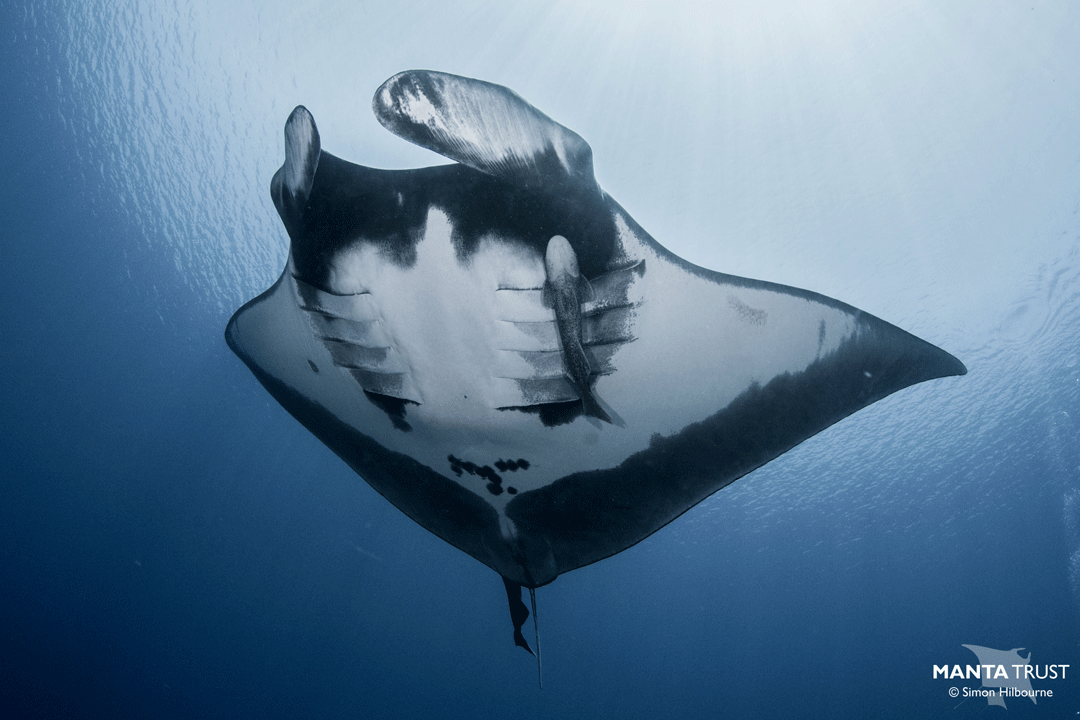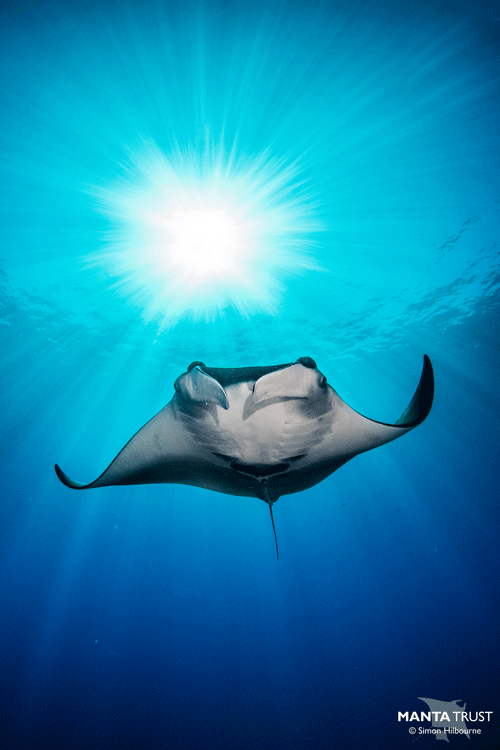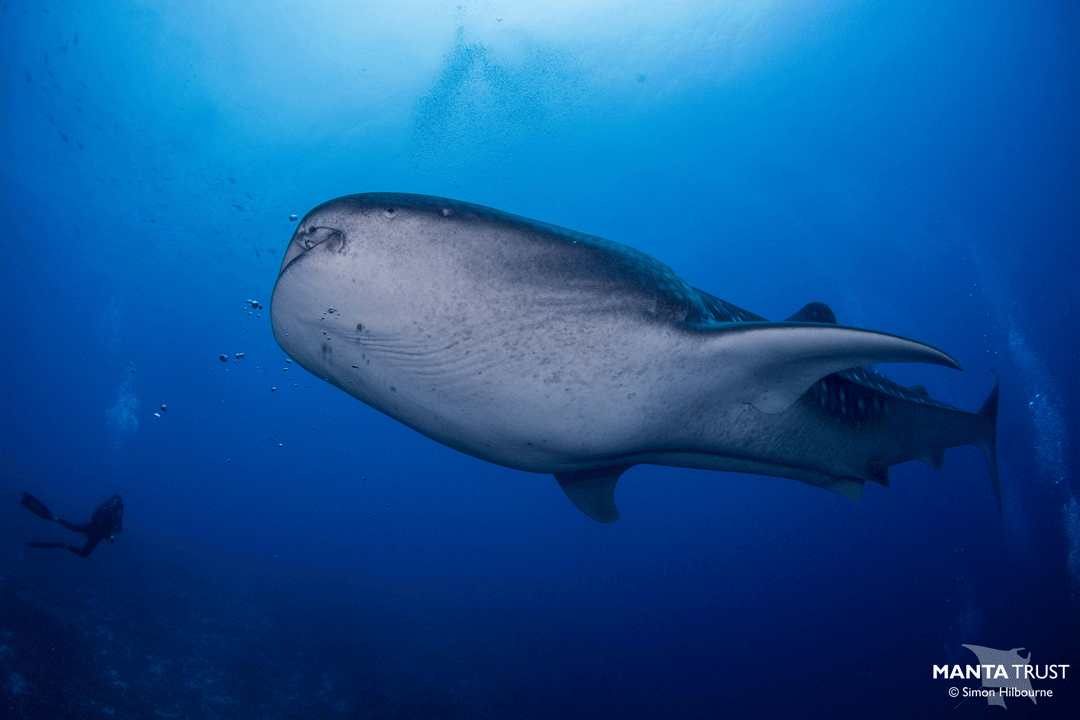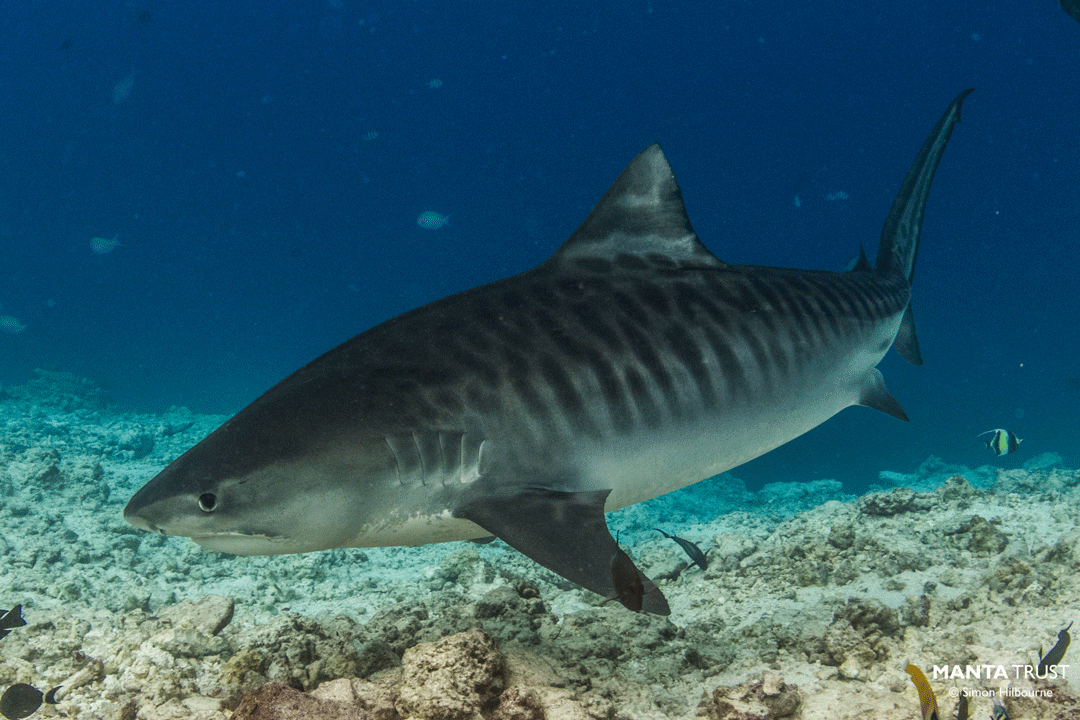Ocean giants in the Maldives deep south
The Maldives is widely regarded as one of the best locations in the world to dive and snorkel with reef manta rays. However, when talking about their larger cousins, the oceanic mantas, locations that more often spring to mind are Socorro, Ecuador, or Raja Ampat. In recent years though, a small isolated island in the far south of the Maldives has become quite the hotspot for oceanic manta ray activity!

Oceanic manta at Fuvahmulha Atoll. Photo by Simon Hilbourne | © Manta Trust
Tourism is growing fast on the island of Fuvahmulah. Accessible by a domestic flight or by liveaboard dive vessels during the calm monsoon months, this single island atoll is fast becoming the must dive spot of the Maldives.
With increasing numbers of oceanic sightings from the area, the Manta Trust decided to head down to Fuvahmulah for a month in 2019 to conduct our first field season. As soon as we had word of manta sightings we sent two researchers down to Fuvahmulah to dive with the local dive centres in search of oceanic manta rays.

Oceanic manta at Fuvahmulha Atoll. Photo by Simon Hilbourne | © Manta Trust
Over this period we encountered mantas on nearly every single dive; sometimes just one or two individuals, but sometimes as many as 12 or 13 giant oceanic mantas. In total, with the help of citizen scientists, we collected over 300 sightings in just 6 weeks! To put this into perspective, the total number of sightings before this year’s season was just 390 sightings across the whole country and dating back to as long ago as 1996.

Oceanic manta at Fuvahmulha Atoll. Photo by Simon Hilbourne | © Manta Trust
Interestingly, of the hundreds of sightings during the season, only 2 of the individuals had previously been recorded in the Maldives; all the rest were new mantas! Additionally, the mantas we were encountering in the morning were different from the ones the previous day, and by the afternoon dive, it was yet more new mantas showing up. This low residency time around Fuvahmulah, and the fact that the mantas don’t appear to be feeding, cleaning or in courtship, suggests it is a highly migrant population just transiting through Maldivian waters.

Oceanic manta at Fuvahmulha Atoll. Photo by Simon Hilbourne | © Manta Trust
In addition to the numerous oceanic manta sightings, the team also encountered plenty of whale sharks, all of which were large adult females. This is a stark contrast to the predominantly juvenile male population of whale sharks regularly recorded throughout the Maldives Archipelago. The isolated position and deep surrounding waters makes Fuvahmulah a magnet for a variety of pelagic species including hammerhead sharks, thresher sharks, mola mola, and very rarely oceanic white tips.

Whale shark at Fuvahmulha Atoll. Photo by Simon Hilbourne | © Manta Trust

Tiger shark at Fuvahmulha Atoll. Photo by Simon Hilbourne | © Manta Trust
With so much new data and excitement from this past season, the next questions to try and answer are; just how big is this population of oceanic manta rays, and where are they coming from or going to during the other 10 months of the year.
Although this is a fascinating and exciting project site, there is a significant sense of urgency for me, the lead researcher. Over in neighbouring Sri Lanka, fish market surveys estimate that close to 1,000 oceanic manta rays are being killed for their gill plates every year. The worrying question for us is the extent, if any, of the connectivity between the populations we are seeing around Fuvahmulah and the mantas being hunted and killed by Sri Lankan fishing fleets.
